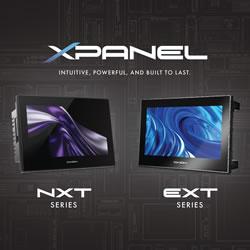When plant operators turn to a virtual desktop infrastructure to run their industrial plant processes, they need an endpoint device that can reliably deliver the efficiency they are looking for in spite of harsh plant conditions.
5 Benefits of Using a Rugged Thin Client
Andre Clayton | Pepperl+Fuchs
When plant operators turn to a virtual desktop infrastructure to run their industrial plant processes, they need an endpoint device that can reliably deliver the efficiency they are looking for in spite of harsh plant conditions. Rugged thin clients do just that.
While rugged thin clients share many qualities with traditional thin clients, they are more durable because they are designed to maintain optimal performance in harsh conditions.
Here are 5 more reasons to consider using a rugged thin client:
Flexible Placement
Rugged thin client PCs are made to withstand the high temperatures, shock, and vibration found in industrial environments, which translates to more installation options. They can be installed outside of the office, and time does not need to be wasted on engineering ways to protect them.
Even in an office, temperatures may affect computer hardware performance, so placement of traditional thin clients is often restricted to well-ventilated areas. In contrast, a tough thin client can operate in extreme temperatures and can be installed in enclosed spaces like office cabinets, drawers, and containers.
Easy Installation
A thin client with a rugged shell and high-quality, non-moving internal parts means versatile mounting. The rugged thin client does not require costly customization of its housing or special care to protect its processor when choosing one of its four mounting styles: desktop, DIN rail, VESA, and wall.
Only a cost-effective kit is needed for DIN rail and VESA mounting. Wall mounting just requires mounting screws.
Cost Reduction
A traditional thin client requires much less electricity than a desktop PC. According to the Information Technology Group, a thin client uses 8 to 10 watts on average, while a desktop computer uses 150 watts. Thin clients also have a longer average life span than fat clients since they contain no moving parts and no hard drive.
A rugged thin client enhances these cost reduction factors due to its superior durability.
Maximized Productivity
Thin clients engineered for extensive uptime maximize productivity. When a thin PC can operate 24/7, so can the application processes of its virtualized control system. Installing rugged thin clients automatically decreases the time and money industrial plants spend on downtime.
Optimized Security
Data breaches are a serious issue. Systems can be hacked when they are most vulnerable, which is often during unplanned maintenance or hardware failure. That is why thin client firmware comes with firewalls, antivirus software, and update capabilities. The addition of this firmware makes rugged thin clients highly reliable inside and out.
The content & opinions in this article are the author’s and do not necessarily represent the views of ManufacturingTomorrow
Comments (0)
This post does not have any comments. Be the first to leave a comment below.
Featured Product

